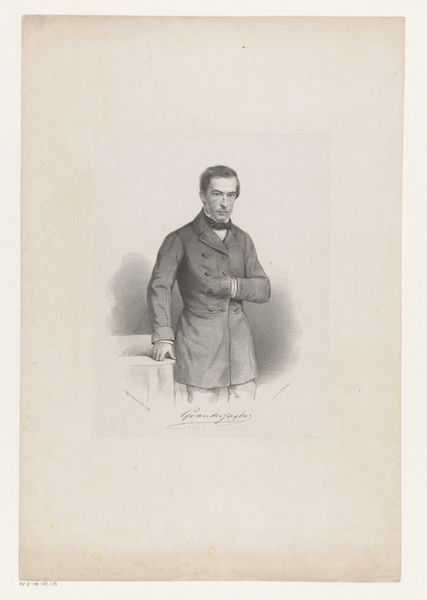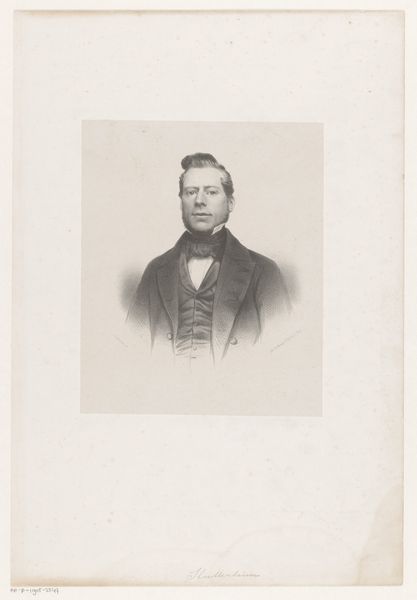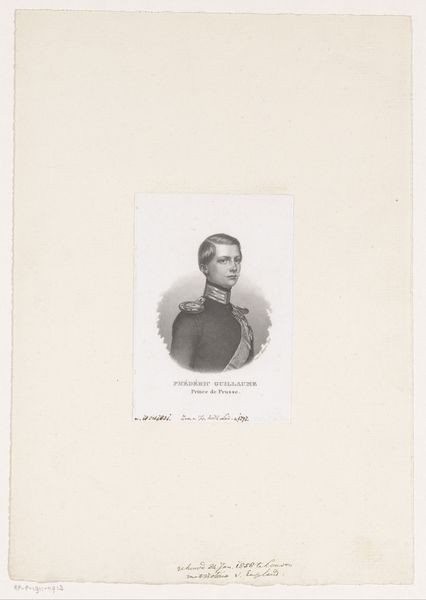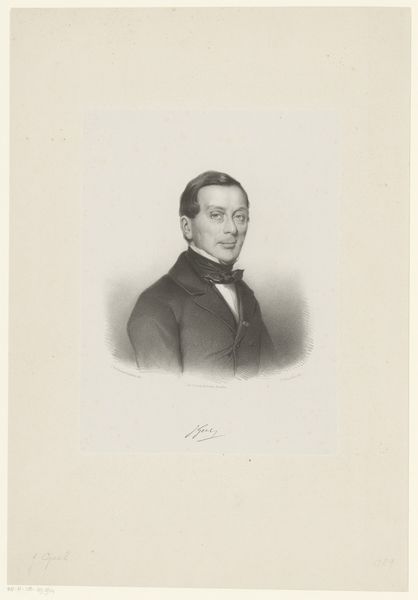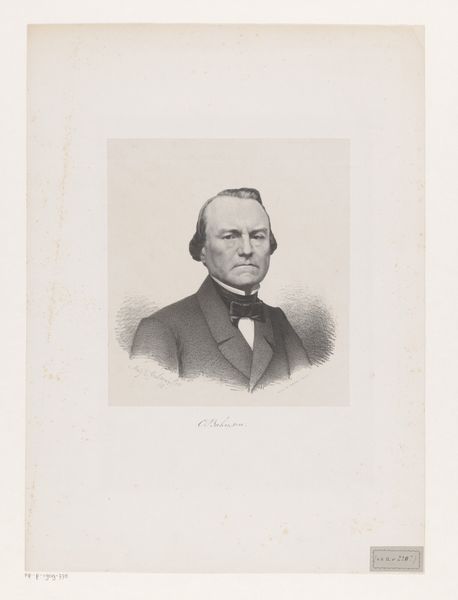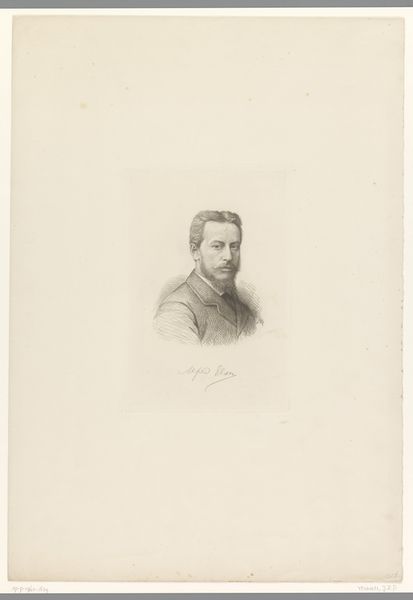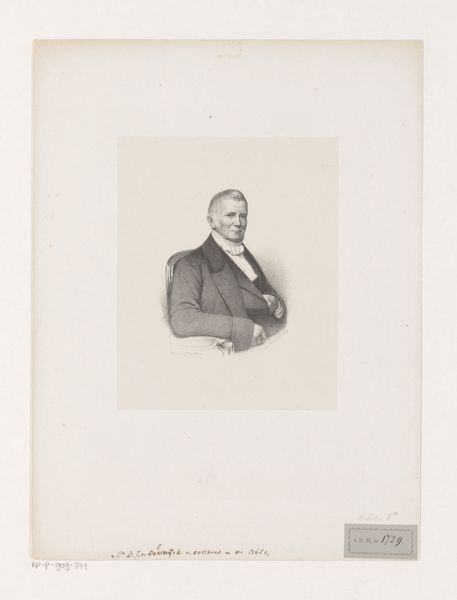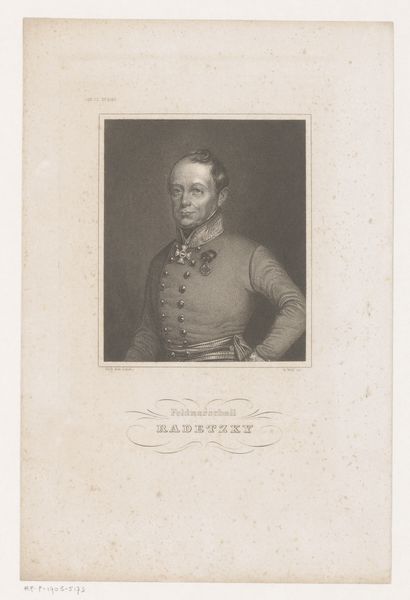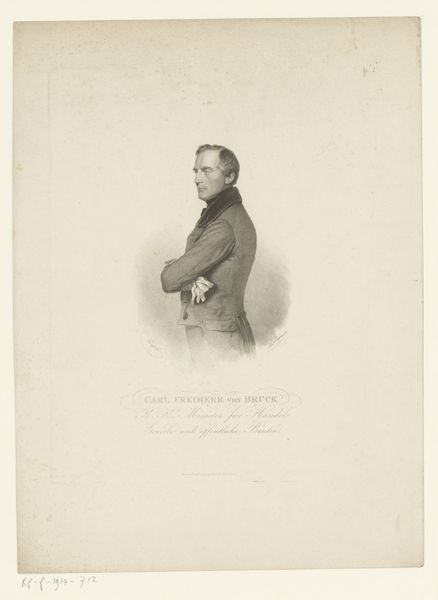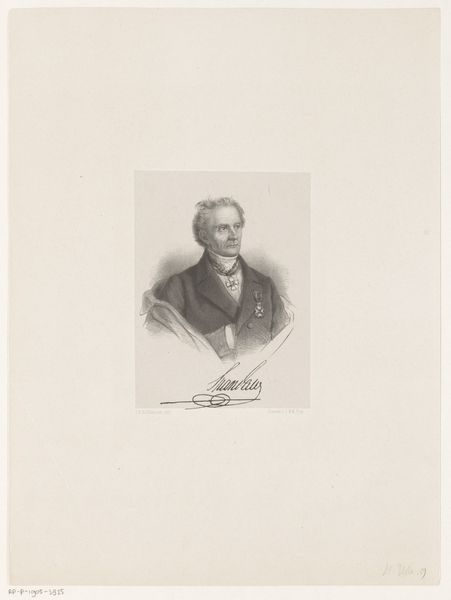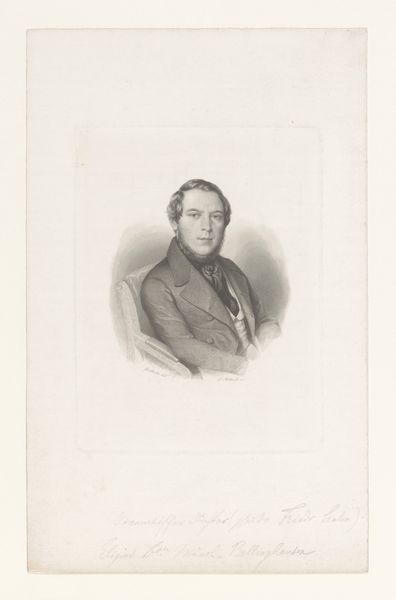
engraving
#
portrait
#
old engraving style
#
history-painting
#
engraving
#
realism
Dimensions: height 172 mm, width 114 mm
Copyright: Rijks Museum: Open Domain
Curator: This engraving is titled "Portret van Carl Giskra," created between 1830 and 1899 by C. Raab. It offers us a glimpse into a particular moment of 19th-century history. Editor: My first thought is… severity. The subject’s gaze is intense, almost confrontational. The black and white starkness adds to that feeling. There's something unsettling in its precision. Curator: The portrait certainly evokes a certain power dynamic. Look at the placement of the subject; the formal wear, but then also note the sword. How do we read the combination of political status and perhaps military expectations, given the turbulent history of the era? Editor: Yes, the sword is certainly loaded with symbolism! A very direct signifier of power, readiness, and possibly aggression. But it's also almost decorative, which introduces an ambiguity: Is this power real or performative? Also, the detail in the engraving gives a sense of history that seems to imbue this man, Giskra, with weight and consequence. Curator: The rose on his chest is intriguing, it presents a sort of paradox alongside the sabre, speaking maybe to the different layers of his role in society. But who was he, and how does he situate into the complex history of Europe during this time? What discourses or systems of thought contributed to shape and position men such as him in the larger social schema? Editor: It is tempting to read the rose as a masonic symbol but that seems a little reductive and there's also that subtle lighting and the detail, this creates a lasting cultural impact because that intense, unwavering gaze sticks with the viewer. Curator: Perhaps that staying power also lies in the work's ability to act as a portal. To trigger that curiosity, as you noted, to explore and reassess past social orders and narratives. To consider questions of how history has been created and passed down. Editor: Yes, images truly can act as containers for cultural memory and meaning, carrying weight far beyond their initial creation. Thanks to those persistent symbols like roses and swords. Curator: Indeed, it offers a fertile ground for exploration. Thank you for your insights.
Comments
No comments
Be the first to comment and join the conversation on the ultimate creative platform.

